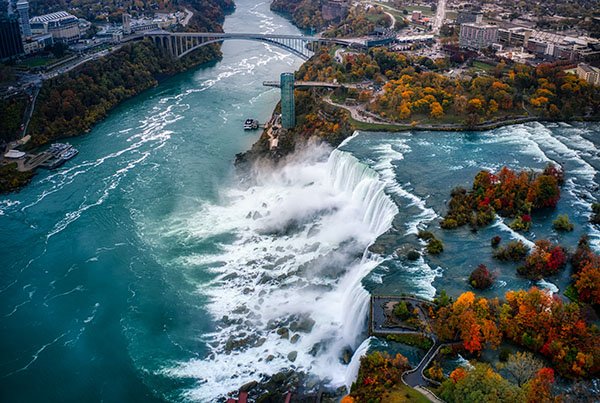Visiting North America's Largest Waterfall
Edward Koorey via UnSplash
Hey there, Creation Explorer!
What is North America’s largest waterfall? Niagara Falls in Ontario, Canada. And, for our new baby Gilbert, visiting this waterfall was his first exploration of God’s creation! All six of us recently visited Niagara Falls and enjoyed the massive wonder.
Niagara Falls is divided into three falls, commonly called the American (or Rainbow) Falls, Bridal Veil Falls, and the Canadian (or Horseshoe) Falls. The Canadian Falls is the best known because it’s the biggest—nine times more water pours over its lip than the nearby American Falls. It’s 177 feet (54 meters) high, and six million cubic feet (168,000 cubic meters) of water flows down the falls every minute. That’s like someone emptying a million bathtubs full of water over the side at the same time. That’s a lot of water!
How did this massive waterfall form? Well, the signs at Niagara Falls say the falls formed 12,000 years ago when glaciers were melting and retreating following an ice age. Those glaciers are believed to have formed the Great Lakes basins, and overflowing water from the basins carved out the Niagara River, including a steep area that formed the falls. Then, slowly, the river has worn back the falls to where they are today. But we know the falls can’t be 12,000 years old because the earth is only about 6,000 years old, according to the history book of the universe—the Bible.
So how did Niagara Falls really form? Well, the Bible teaches there was a worldwide flood about 4,300 years ago. This global flood laid down most of today’s rock layers, including the layers you can see on the sides of the Niagara Gorge (where the Niagara River flows). But the flood also caused an ice age afterward. Thick glaciers formed across much of the earth’s northern and southern surface, including in southern Canada, where Niagara Falls is located. As the ice age came to an end, the glaciers rapidly melted, and all this water, along with chunks of ice and rocks, carved out the Niagara River bed.
But did it take a long time for Niagara Falls to get where it is today? Not at all. You see, evolutionists assume it took a long time because they assume the flow of water (the rate of erosion) has remained more or less the same for thousands of years. But the ice sheets melting after the ice age would have sped erosion up in the years after the ice age. It only took a short time to carve out the river and get the falls where they are today.
Well, we’re off on another adventure. Until next time, remember what Jesus said about the flood, “For as were the days of Noah, so will be the coming of the Son of Man” (Matthew 24:37). Just as there was a global flood—we see the evidence all around us, such as at Niagara Falls—so will there be a second coming of Christ. We can trust God’s promises!
- © 2025 Answers in Genesis
- Privacy Policy
- Contact
- About







